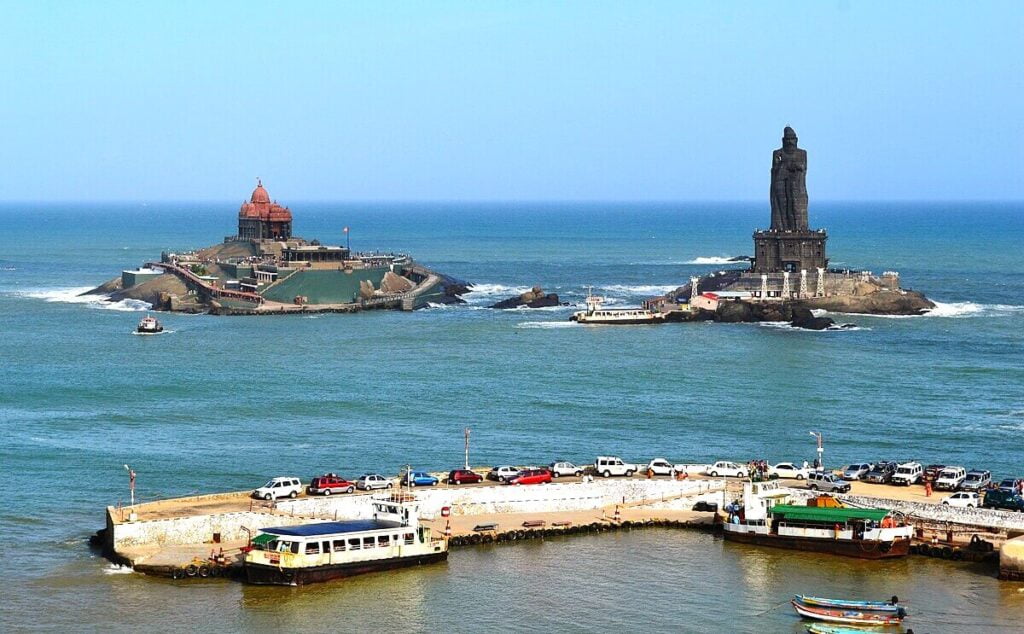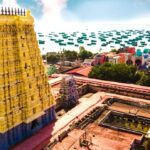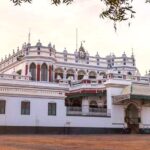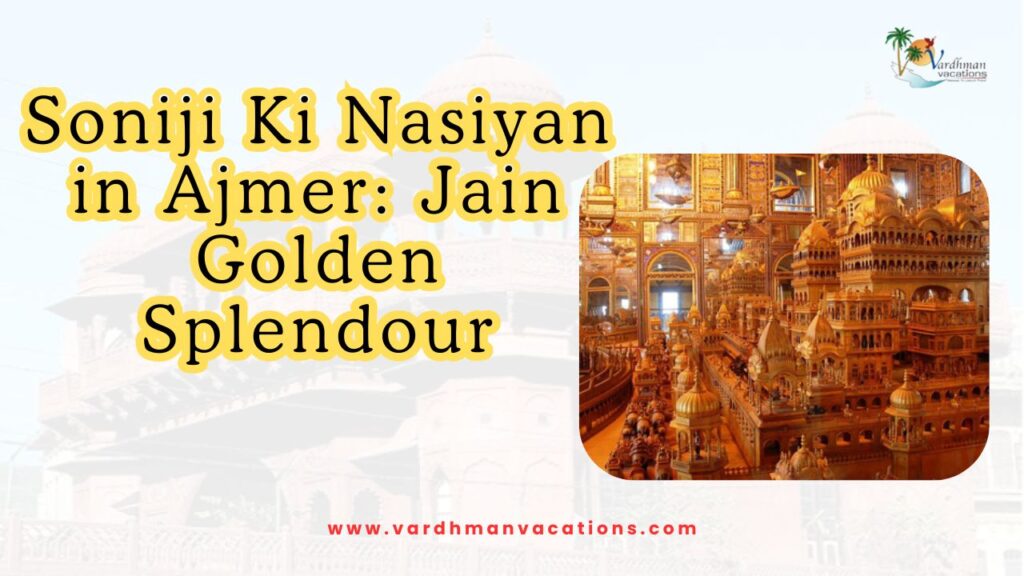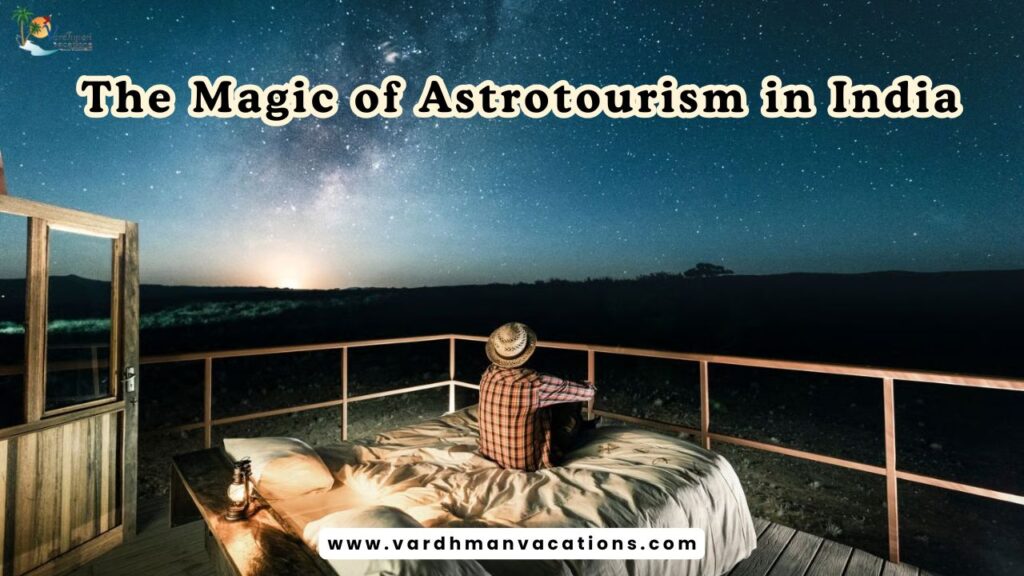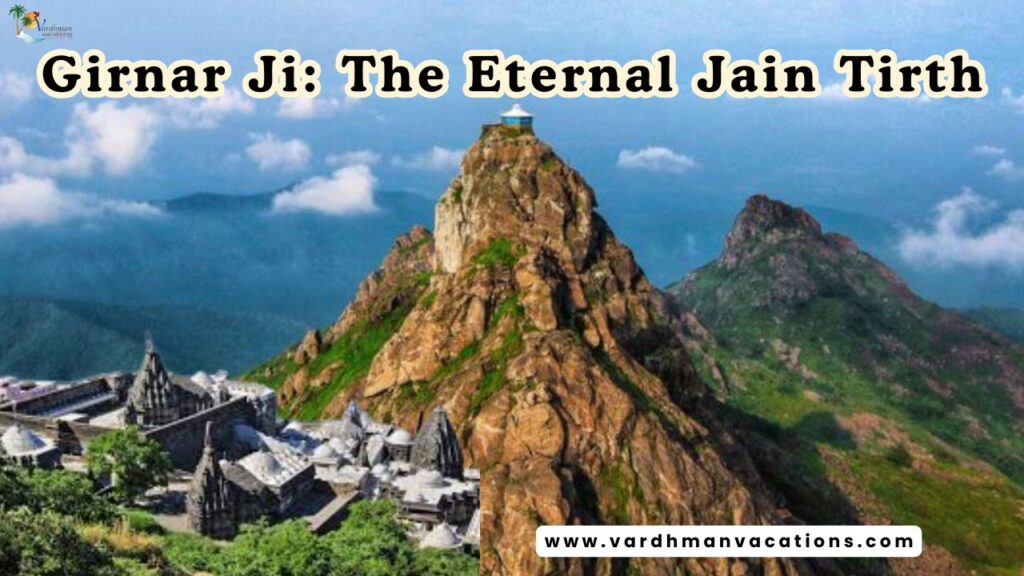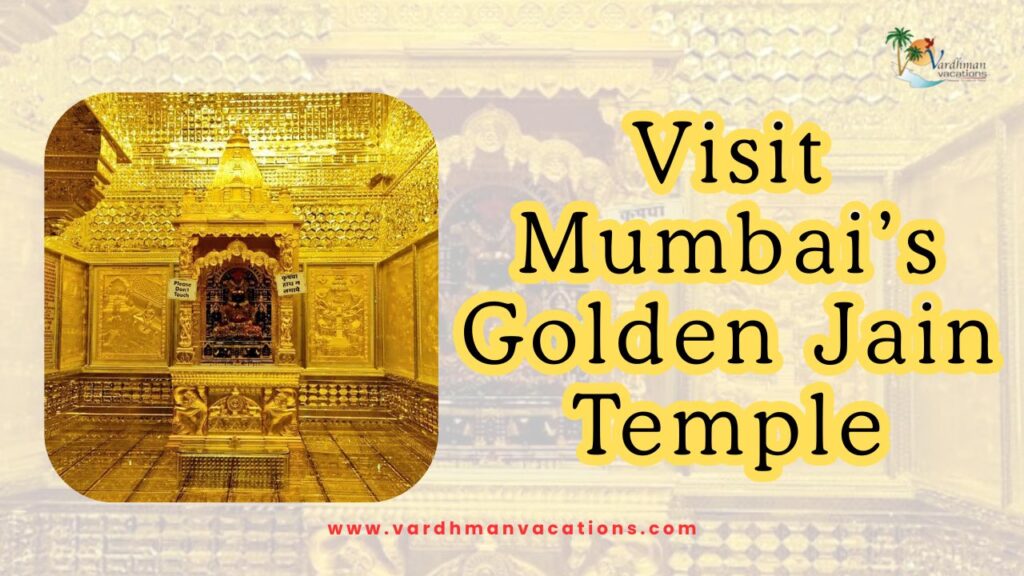Kanyakumari, also known as Cape Comorin, is a coastal town located in the southernmost part of India. It is situated at the confluence of the Arabian Sea, the Bay of Bengal, and the Indian Ocean, making it a unique geographical location. Kanyakumari is famous for its breathtaking sunrise and sunset views, its beautiful natural scenery, clean beaches, and historical landmarks. The town is home to several historical landmarks, such as the Vivekananda Rock Memorial and the Thiruvalluvar Statue. Kanyakumari’s vibrant culture and stunning landscapes offer a truly unforgettable travel experience.
Kanyakumari has over 70 kilometers of coastline with stunning beaches and golden sands, perfect for relaxing and enjoying the sun. The sunrises and sunsets over the Indian Ocean are breathtaking, especially on full moon days when you can see both at once. The city’s shoreline has pristine beaches touched by turquoise waves from the Indian Ocean. It’s also a popular destination for Hindu, Christian, and Muslim pilgrims. The most well-known landmark is the Kumari Amman Temple, dedicated to the Goddess Kanya Kumari.
The best time to visit Kanyakumari is in the winter, from October to March when the temperature is cool and pleasant.
Top Attractions in Kanyakumari
Kanyakumari offers a plethora of attractions for tourists to explore. Here are some important attractions in Kanyakumari:
Vivekananda Rock Memorial
Timings: 08.00 AM to 04.00 PM
Normal ferry charge including rock entry: Rs.105 for both Indian and Foreigner
Special ferry charge including rock entry: Rs.330 for both Indian and Foreigner
The Vivekananda Rock Memorial is a popular tourist attraction located on a rock off the coast of Kanyakumari. It was built in 1970 in honor of Swami Vivekananda, a Hindu monk known for spreading Indian philosophy in the West. The memorial consists of two main structures: the Vivekananda Mandapam, which includes a museum showcasing Swami Vivekananda’s life and teachings, and a meditation hall with a sacred sanctum called the Sripada Mandapam. The memorial is known for its stunning views of the Indian Ocean. Visitors can reach the memorial by ferry from the mainland, which provides a scenic 20-minute journey.
Bhagavathy Amman Temple / Kumari Amman Temple
Timings: 04.30 AM to 12.30 PM & 04.00 PM to 08.30 PM
The Kumari Amman Temple, also known as the Bhagavathy Amman Temple, is an important Hindu temple in Kanyakumari. It is a popular pilgrimage destination and is dedicated to Goddess Kanya Kumari, also known as Devi Kanyakumari. The temple is one of the 108 Shakti Peethas, sacred sites associated with the Goddesses Sati and Shakti. The temple, which is believed to be over 3,000 years old, has a main idol of Goddess Kanya Kumari facing east, symbolizing new beginnings. The temple complex is surrounded by stone walls and has its main entrance on the north side. Unlike other Hindu temples, the primary idol of Goddess Kanya Kumari faces east, symbolizing her role in dispelling darkness and welcoming the sun. The idol is adorned with a unique and very shiny nose ring, the origin and significance of which are surrounded by legends and myths.
Thiruvalluvar Statue
Timings: 09.00 AM to 04.00 PM
The Thiruvalluvar Statue is a 41-meter-tall stone sculpture of the Tamil poet and philosopher Valluvar, also known as Thiruvalluvar. It stands on a small island near the town of Kanyakumari on the southernmost tip of the Indian peninsula in Tamil Nadu. The statue was created by V. Ganapathi Sthapati, an Indian sculptor, and was dedicated to the people of Tamil Nadu on January 1, 2000, by the state’s then-chief minister, M. Karunanidhi. Thiruvalluvar is the author of the Thirukkural, an ancient Tamil book on ethics and morality that is regarded as one of Tamil literature’s best masterpieces. The 133-foot (41 meters) tall statue and pedestal represent the 133 chapters of the Thirukkural. The Valluvar sculpture, standing at 95 feet (29 meters) rests on a 38-foot (12-meter) pedestal representing the 38 chapters of Virtue, the first of the Kural text’s three books. The monument depicts the second and third volumes of the Kural scripture, respectively, wealth and love. The overall design suggests that money and love can be achieved and enjoyed based on strong virtue. The statue is designed in Indian architectural styles and is hollow inside. It is composed of stone and intended to endure severe winds and saline weather conditions.
Mahatma Gandhi Mandapam
Timings: 07.00 AM to 07.00 PM
The Mahatma Gandhi Mandapam, popularly known as the Gandhi Memorial, is a pink-colored structure in Kanyakumari, India. It was built to honor Mahatma Gandhi, who was a significant leader in India’s fight for independence. After Gandhi’s assassination in 1948, his ashes were divided into urns and distributed throughout India. One of these urns was brought to Kanyakumari, and the Gandhi Memorial was constructed on the site where the urn was displayed before being immersed in the sea. The memorial was finished in 1956 and features a 79-foot-tall pink portico representing Gandhi’s age at the time of his death. Inspired by Orissan architecture, the building has a pyramidal roof and curving eaves. The Gandhi Memorial allows people to pay their respects to Mahatma Gandhi and learn about his life and legacy. It stands as a historical landmark connecting visitors to India’s freedom movement and Gandhi’s nonviolent beliefs.
Wax Museum
Timings: 08.00 AM to 08.00 PM
Entrance fee: Rs.120
Kanyakumari has a wax museum called the Mayapuri Wonder Wax Museum, located inside the Baywatch amusement park. The museum has life-sized wax figurines of famous people from various fields, such as national and international celebrities, historical figures, Indian and foreign cinema actors, political figures, and sports personalities. It’s a great place for enjoyable entertainment, especially for families and children. The wax figurines provide excellent photo opportunities, allowing you to stand next to your favorite celebrities or historical figures in a realistic setting. The Baywatch amusement park also includes a 3D museum, water rides (when operational), and fun activities.
Government Museum
Timings: 09.30 AM to 05.00 PM
Entrance fee: Foreigner – Rs.100 & Indian – Rs.5
The Government Museum in Kanyakumari showcases the region’s rich history and culture. It is managed by the Tamil Nadu government and is located on Gandhi Mandapam Road. The museum features a wide range of exhibits covering different aspects of the region:
Archaeology: artifacts and remains from the region’s ancient past
Anthropology: items and displays demonstrating the ethnic customs and traditions of the area
History: displays reflecting the historical timeline of Kanyakumari and the neighboring districts
Numismatics: a collection of coins and currencies used throughout the region’s history
Philately: a collection of stamps and postal goods
Botany: specimens and information on the local plant life
Zoology: exhibitions displaying the region’s fauna
Geology: rocks and minerals discovered in the area
Local History: exhibits dedicated to Kanyakumari’s distinct cultural legacy.
In addition, the museum houses sculptures and wood carvings of Hindu deities, historical personalities, and scenes from mythology and daily life.
Triveni Sangamam
The Triveni Sangamam, also known as the confluence of the three seas, is located near the southernmost point of mainland India in Kanyakumari, Tamil Nadu. It’s a beautiful sight that many people visit Kanyakumari specifically to see. The meeting point of the three seas is easily recognizable by a line of white foam, and the waters of the seas have different colors. This unique geographical phenomenon brings together three large bodies of water at one location. Hindus consider this confluence sacred and believe that bathing in the sangamam cleanses the soul. The Triveni Sangamam is a well-known tourist attraction due to its natural beauty and religious significance.
Important Local Festivals in Kanyakumari
Immerse yourself in the vibrant culture of Kanyakumari by exploring its temples and attending traditional festivals. Here are some important local festivals celebrated in Kanyakumari:
Kumari Thiruvizha
Kumari Thiruvizha is a ten-day festival held at the Kumari Amman Temple, dedicated to the goddess Parvati. The celebration features cultural events including music, dance, and drama performances. It is believed that Goddess Parvati’s spine and right shoulder fell at this location during her self-destruction. It marks the Tamil New Year and is usually held in April or May.
Suchindram Temple Car Festival
The Suchindram Temple Car Festival takes place over ten days in December and January. It is held at the Thanumalayan Temple in Suchindram, which pays tribute to Brahma, Vishnu, and Shiva. One of the main attractions of the festival is a vibrant procession with decorated temple cars, which is popular among tourists.
Cape Festival
The Cape Festival takes place in October in Kanyakumari. It’s a three-day festival celebrating the region’s cultural history. The festival features a variety of cultural events, including music, dance, and drama performances. Visitors can also enjoy a beach festival with boat racing, beach volleyball, and sand sculpture events. Kanyakumari is named after the Hindu deity Devi Kanya Kumari, who is believed to be Lord Krishna’s sister. According to Hindu belief, Devi Kanya was an incarnation of Goddess Parvati.
Kalabham
This unique event occurs on the last Friday of the Tamil month of Aadi (July-August). The festival involves covering the figure of the presiding deity at the Bhagavathy Amman temple with sandalwood paste.
Pongal
Pongal is a harvest festival celebrated in January. It is a four-day festival where people worship the Sun God and farmers give their first fruits to the Sun God, Surya, as a symbol of gratitude. During this festival, people decorate their homes with Kolam artwork and prepare traditional dishes like Pongal (a sweet dish made of rice and jaggery) and start bonfires.
Interesting Places Nearby Kanyakumari
There are many interesting places around Kanyakumari that are worth visiting. Here are some notable places:
Suchindram Thanumalayan Swamy Temple
Entrance fee: No
Location: About 15 km from Kanyakumari
Timings: 06.00 AM to 12.00 PM & 05.00 PM to 08.30 PM
The Suchindram Thanumalayan Temple is a Hindu temple located in Suchindram, 15 kilometers from Kanyakumari. It is significant to both the Shaivaite and Vaishnavite sects of Hindus and is dedicated to the Trimurti – Shiva, Vishnu, and Brahma. The temple complex covers two acres and includes two tall entrances called Gopurams. It features 30 shrines and a unique three-tiered lingam representing the three deities. The temple has a unique architecture that combines Kerala and Tamil cultures and includes four melodic pillars that emit musical notes when struck. Another notable feature is a 22-foot-tall statue of Lord Hanuman.
Vattakottai Fort
Location: About 6 km from Kanyakumari
Timings: 08.00 AM to 05.00 PM
The Vattakottai Fort, also known as the Circular Fort, is a coastal stronghold located 7 kilometers from Kanyakumari, India’s southernmost point. Built in the 18th century during the reign of the Travancore kingdom, it was strategically important and designed by Captain Eustachius De Lannoy. The fort is rectangular and covers an area of 3.5 acres, with walls made of granite stones. It features a blend of Kerala and European architectural styles and contains various structures such as watchtowers, a weapon chamber, and a hidden tunnel connecting it to the Padmanabhapuram Palace. The fort offers breathtaking views of the Bay of Bengal and the Western Ghats. The Archaeological Survey of India has designated it as a protected monument.
Padmanabhapuram Wooden Palace / Marthandam Palace
Timings: 09.30 AM to 04.30 PM (Lunch break time: 01.00 PM to 02.00 PM)
Camera fee: Rs.60
Video Camera fee: Rs.2500
Entrance fee: Foreigner Adult – Rs.320 & Indian Adult – Rs.40 and Foreigner child below 12 years – Rs.110 & Indian child below 12 years – Rs.10
Holidays: Monday, Wednesday Forenoon and National Holidays
The Padmanabhapuram Palace, also known as Kalkulam Palace, was built in the 16th century and served as the capital of the Travancore state until the late 18th century. It showcases stunning Kerala architecture, including intricate woodwork, murals, and craftsmanship. The palace houses structures such as the Puthukallu Mandapam, Ezhuthattu Mandapam, Natakasala, Mantrasala, and Thekkakkuttu Mandapam. It features murals depicting Hindu mythology, and its ceilings are adorned with floral and geometric motifs. The palace also contains antique furniture, weapons, and a unique flooring made from egg whites and coconut shells. Additionally, it includes the King’s Bedroom, featuring a bed made of 64 different species of herbal and medicinal wood. The palace is said to have an underground tunnel for the royal family’s escape. Furthermore, the complex has a museum displaying a variety of antiques, weaponry, furniture, Chinese jars, and paintings related to Travancore’s history.
Thiruparappu Waterfalls
Thiruparappu Waterfalls is located about 55 kilometers from Kanyakumari. It is a man-made waterfall with a lovely scenic view. The waterfall is created by the Kodayar River cascading down, forming a breathtaking 50-foot waterfall. The riverbed is stony and about 300 feet in length. The waterfall flows for around seven months of the year, and the water collects in a pool below, making it a popular swimming and picnic spot. The area around the waterfall is lush green, providing a pleasant escape. There is also a modest shrine dedicated to Lord Shiva near the entrance, which is highly adored by locals.
Important Temple Destinations nearby Kanyakumari
There are many important temples in and around Kanyakumari that attract devotees and tourists alike. Some of the important temple sites near Kanyakumari are as follows:
Krishnapuram Temple at Tirunelveli
Timings: 07.00 AM to 11.00 AM & 5.00 PM to 08.00 PM
The Krishnapuram Venkatachalapathy Temple is a Hindu temple dedicated to the god Vishnu. It is located near Krishnapuram, about 10 kilometers from Tirunelveli. The temple is known for its Nayak architecture and was built in the Dravidian style. It is believed to have been constructed by Krishnappa Nayak, the son of the founder of the Madurai Nayak dynasty, in the 16th century. Inscriptions and copper plates found in the temple support this claim. The temple complex is surrounded by a tall granite wall that encloses all its shrines. The temple’s gateway tower, called rajagopuram, has five tiers and stands 110 feet tall. Inside the sanctum sanctorum is a picture of Venkatachalapathy, a form of Lord Vishnu, in a standing position with four arms. The granite idol is about four feet tall. There are also temples within the complex dedicated to other deities such as Alamelumangai (Lakshmi), the consort of Vishnu, and Andal, a revered Alvar saint. The Krishnapuram Temple is a popular Hindu pilgrimage site, especially during the 11-day Brahmotsavam festival held in the Tamil month of Puratasi (September-October). Other celebrations include Vaikunda Ekadasi in December-January, Pongal in January, and Tamil and English New Year’s Day.
Nellaiyappar Temple at Tirunelveli
Timings: 06.00 AM to 12.30 PM & 04.00 PM to 09.00 PM
The Nellaiyappar Temple in Tirunelveli is a Hindu temple dedicated to the deity Shiva. The main deity is Nellaiyappar, a form of Lord Shiva represented by the lingam, and his consort Parvati is portrayed as Kanthimathi Amman. The temple is also known for venerating the deity Vishnu. It is believed that the initial complex was built by the Pandyas, with later additions by the Cholas, Pallavas, Cheras, and Madurai Nayaks. The temple complex covers an area of 14.5 acres and features several shrines, with the most important ones dedicated to Swamy Nellaiyappar and his consort, Sri Kanthimathi Ambal. The temple is famous for its melodic pillars, the Thousand Pillar Hall, and five gopurams. The Thousand Pillar Hall, which is supported by 1000 pillars, is a striking example of Dravidian architecture. The temple also celebrates various festivals throughout the year, including the Brahmotsavam festival held during the Tamil month of Aani (June-July), featuring vibrant processions, religious rites, and cultural events.
Nava Tirupathi
Tirunelveli is famous for its Nava Tirupathi temples and numerous waterfalls, earning it the nickname “the Spa of South India.” The Nava Tirupathi, meaning “Nine Tirupati’s,” consists of nine Hindu temples dedicated to Lord Vishnu along the Tiruchendur-Tirunelveli road in Tamil Nadu, India, situated along the Thamirabarani River. Each of these temples is considered a Divya Desam, which are among the 108 holy sites of Vishnu worshipped by the 12 Alvar saints, poet-saints from the Tamil Nadu Vaishnava tradition. The Nava Tirupathi temples are known for their unique architectural styles, rich legends, and spiritual significance.
Here is the list of Nava Tirupati Temples along with their significance:
Sri Vaikuntanatha Perumal Temple, Srivaikuntam: The Sri Vaikuntanatha Perumal Temple in Srivaikuntam is the first of the Nava Tirupati. It is dedicated to Sri Vaikuntanatha, an avatar of Vishnu who is believed to reside in Vaikunta, his heavenly home.
Sri Vijayasana Perumal Temple, Varagunamangai (Natham): The second temple, located in Varagunamangai (Natham), is dedicated to Sri Vijayasana Perumal and depicts Vishnu in a victorious pose.
Sri Vaithamanidhi Perumal Temple, Thirukkolur: The temple in Thirukkolur is dedicated to Lord Vishnu as Vaithamanidhi, the source of all necessities.
Sri Kasinivendan Perumal Temple, Thirupuliyangudi: The fourth temple at Thirupuliyangudi is home to Sri Kasinivendan Perumal, a form of Vishnu believed to have the power to remove sins.
Sri Adhi Natha Perumal Temple, Alwarthirunagari: This temple is dedicated to Sri Adhi Natha Perumal, the eternal Lord.
Makara Nedunkuzhai Kadar Temple, Thenthiruperai: The temple in Thenthiruperai is dedicated to Makara Nedunkuzhai Kadar, a form of Vishnu with a long, beautiful mane.
Sri Vanamamalai Perumal Temple, Perunkulam: This temple honors Sri Vanamamalai Perumal and is adorned with a garland of flowers from the forest.
Sri Neelakantan Perumal Temple, Appanagaram: The eighth temple is home to Sri Neelakantan Perumal, who has a blue complexion. The temple is located in Appanagaram and is known as Sri Neelakantan Perumal Temple.
Sri Sowmya Narayana Perumal Temple, Kuruvithurai: The last temple in the Nava Tirupathi complex is called Sri Sowmya Narayana Perumal Temple in Kuruvithurai. This temple is dedicated to Sri Sowmya Narayana Perumal, who is believed to embody auspiciousness.
These temples are important places of pilgrimage for Vaishnavites. They are well-known for their beautiful architecture, sculptures, and spiritual significance. Each of these temples is highly revered by devotees of Lord Vishnu. The Nava Tirupathi temples also hold special festivals, such as the Garuda Sevai, where the deities from all nine temples are brought together for a grand procession.
Thiruchendur Murugan Temple
Timings: 05.00 AM to 12.00 PM & 05.00 PM to 09.00 PM
The Tiruchendur Murugan Temple, also known as the Subramaniya Swamy Temple, is a popular Hindu temple devoted to Lord Murugan, located in Thiruchendur in the Thoothukudi district, on the Bay of Bengal. It is the second of Murugan’s six homes and features Dravidian-style architecture, including a nine-story gopuram. The temple is known for its depiction of Lord Murugan with a spear, as well as its location on the coast and the presence of a holy well (Shanmuga Theertham). The temple is particularly vibrant during the Skanda Sashti festival, featuring vivid processions, religious ceremonies, and cultural events.
Sorimuthu Ayyanar temple
Timings: 08.00 AM to 03.00 PM
The Sorimuthu Ayyanar Temple is a Hindu temple dedicated to Lord Ayyappan in Tamil Nadu’s Mundhunthurai reserve forest, nestled in lush rainforest. The temple is located between Papanasam and the Karaiyar Dam, approximately 12 km from Papanasam and 61 km from Tirunelveli. The principal deity of the temple is Mahalinga Swamy, but Sorimuthu Ayyanar is more often worshipped here. Ayyanar shrines are believed to safeguard rural villages from burglars at night. The Sorimuthu Ayyanar Temple is considered one of the most powerful and well-known Ayyanar shrines in Tamil Nadu.
Conclusion
Kanyakumari is a mesmerizing destination that offers a perfect blend of natural beauty, cultural heritage, and spiritual experiences. Whether you’re watching the sunrise from the Vivekananda Rock Memorial or indulging in the local cuisine, Kanyakumari has something for everyone. Plan your trip to this enchanting town and immerse yourself in its vibrant culture and stunning landscapes. Your visit to Kanyakumari is sure to be an unforgettable experience that will leave you with cherished memories.

